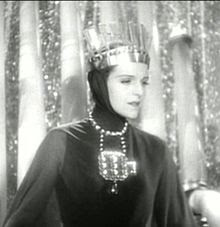However, although this scene is out of this world incredible, and I could praise Spielberg all day for his work in it, I believe more credit should be given to the scene before the Normandy landings: the scene in the Normandy American Cemetery. As we watch this old man, clearly distressed, determinedly making his way to a place, which we do not know yet. His family follow behind as some sort of support. And then finally, as the old man stops to catch his breath, with a glimpse of the American flag waving in the wind, he starts walking again, slowly revealing one by one, those beautiful white marble graves. Pristinely kept, and stunning to behold, more and more of the graves appear. The camera pans upwards slightly so that we finally feel and see the sheer mass of graves there are in this cemetery. Stood side by side, immaculately presented, gleaming in the light- men who fought bravely on that unforgettable day are united together.
The great John Williams composed the score for this movie, and the music for this scene is one of my favourites. It begins with a very solemn and official trumpet, but then as the graves come into view, a weeping orchestra of strings bounds into action, swelling in a melancholy manor to reveal the breathtaking view of this overwhelming memorial. For me this is the genius of Spielberg- at it's most potent and yet it's most subtle. There are no special effects, fancy speeches, or odd camera movements.
What is so touching about the scene also is the fact that Spielberg lays out in front of us all of the men who died for us. We are here today because of their bravery. The fact that they are a small fraction of the overall number of heroes who died fighting in wars is another emotional punch, and I don't know how anyone cannot be moved to tears by that image of endless gravestones.
 I would like to think that Spielberg got his inspiration in this scene from Gone with the Wind, when Scarlett is looking for a doctor because she needs help, but as she looks around, the camera pans upwards higher and higher, revealing thousands of others needing help too, and ending with a shot of all the bodies and injured men, and their flag in the foreground. Both scenes show the atrocities caused by war, and the scale of death and pain it causes. But they also show the bravery and patriotism that all these men possessed and fought with.That scene from Gone with the Wind is extremely powerful, shocking and moving, and what Spielberg created in Saving Private Ryan was equally so.
I would like to think that Spielberg got his inspiration in this scene from Gone with the Wind, when Scarlett is looking for a doctor because she needs help, but as she looks around, the camera pans upwards higher and higher, revealing thousands of others needing help too, and ending with a shot of all the bodies and injured men, and their flag in the foreground. Both scenes show the atrocities caused by war, and the scale of death and pain it causes. But they also show the bravery and patriotism that all these men possessed and fought with.That scene from Gone with the Wind is extremely powerful, shocking and moving, and what Spielberg created in Saving Private Ryan was equally so.






